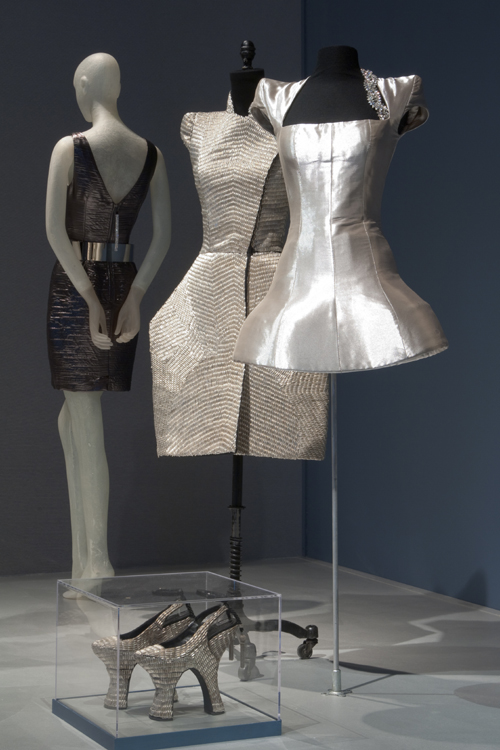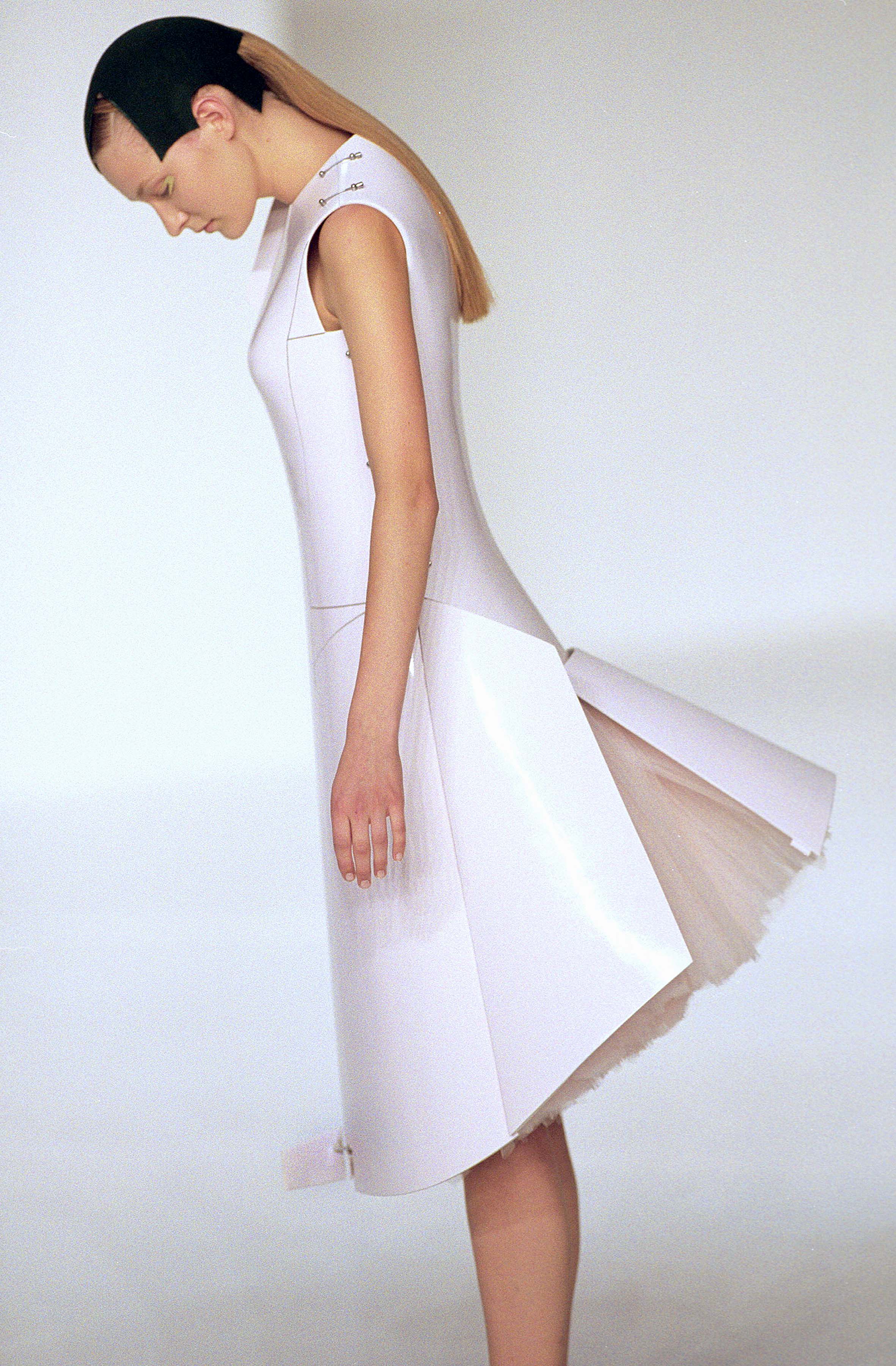Matthew Teitelbaum is the Art Gallery of Ontario's Michael and Sonja Koerner Director and CEO. Matthew joined the AGO in 1993 as chief curator and was appointed director in 1998. Born in Toronto in 1956, he holds an honours bachelor of arts in Canadian history from Carleton University, a master of philosophy in modern European painting and sculpture from the Courtauld Institute of Art, and an honorary Doctor of Laws from Queen's University. He has taught at Harvard, York University and the University of Western Ontario, and has lectured across North America.
Mr. Teitelbaum met with Ingrid Mida, artist and writer, in his office on July 18, 2011 to have a conversation about art and fashion. This is a condensed and edited version of their conversation.
Ingrid Mida: I recently interviewed Nathalie Bondil, Director and Chief Curator of the Montreal Museum of Fine Arts, who initiated the exhibition of Jean Paul Gaultier. We had a long conversation about fashion and art, and she was adamant that fashion should be considered art. The MMFA has exhibited Yves Saint Laurent, Denis Gagnon and Jean Paul Gaultier as contemporary artists. How do you view the presentation of fashion as art?
Matthew Teitelbaum: I’m not going to give you a contrary view per se. I can give you an institutional view. It is fine for Nathalie to take that position and I have no argument with the position, except the following which is: you make decisions about your programming based on whether you want it to or whether it should relate to the strength of the collection. She has made the decision to commit to this as a programming initiative notwithstanding the fact that she doesn’t have a [costume] collection and doesn’t have a curator. And that’s fine. We are not so inclined. In fact, we are feeling even more strongly than we ever have that programming should come from the core part of our identity which is our collection and where our staff actually have expertise. We don’t have any particular staff expertise in this area. Anything we did would be more or less a borrowed exposition. That doesn’t mean that we haven’t quite consistently included fashion and clothing in our exhibitions. We do it a lot. We did it in the Catherine the Great exhibition; we did it in the Tissot exhibition where we worked closely with the Royal Ontario Museum to borrow period dress; and we did a great Warhol exhibition about Andy Warhol and fashion about ten years ago or so. As a category, it is not that we are allergic to it or don’t agree with it, or think that it has space, and maybe we can even agree that it would drive audiences, but I don’t actually think that we in the AGO can create strength in our institution without building on what we know, what we have, and where our expertise is.
Ingrid Mida: In Paris there is an exhibition in which clothing designed by Madame Gres has been placed amongst the sculptures of Musee Bourdelle. This created an interesting interplay between the objects of the museum and the work of a fashion designer. Would you ever consider something like that?
Matthew Teitelbaum: Sure. I say sure in that regards to an animation strategy. It hasn’t come up. It is resource heavy to do that. Again, you are talking about a museum doing that by borrowing fashion. It is a nice idea. I don’t think that anyone has ever come to us with that idea. That is one thing to do and you certainly could do that. At one time, we explored the idea of getting someone to do an audio tour of our collection with a commentary on dress or design. You could do that interpretative stream or you could bring fashion in as sculpture pieces in relation to [art] sculpture. There is no reason not to do it. One would want to do it in the right way, at the right time.
Ingrid Mida: Have you seen the McQueen exhibition at the Met?
Matthew Teitelbaum: No.
Ingrid Mida: That’s a shame. That particular exhibition is one of the strongest examples of a fashion designer as a contemporary artist. The underlying precepts of life/death, good/evil, light/dark and wonder/terror are also sources of inspiration for artists. They were effectively presented as a complete installation with sound, light, and video. It was a really comprehensive and beautiful exhibition that focused on the concept of McQueen as Romantic Hero and the idea of the sublime. (Read the exhibition review of Alexander McQueen: Savage Beauty here.)
Matthew Teitelbaum: Maybe I should try and go see that. Is it going elsewhere?
Ingrid Mida: No it is not. That’s it. There is also an incredible exhibition catalogue that doesn’t have installation photos but the book offers another level of presentation in that the clothing was photographed on live models wearing white body makeup. The photographer then manipulated the photos to cut off their heads and give them articulated joints. It was another creative enterprise added onto the exhibition itself. The Met seemed to take the exhibition of fashion to a whole other level. Fashion as art seems to be taking over the museum world.
Matthew Teitelbaum: Partly because it is so seductive. Audiences come for that.
Ingrid Mida: Isn’t attracting audiences an important part of your job? Wasn't your presentation of King Tut a drive for audiences?
Matthew Teitelbaum: King Tut was a similar initiative where we didn’t build on the strengths of the institution, maybe going off brand or whatever that means. As successful as it was in introducing the institution, it is an open question on how active that is in developing sustainable audiences. And again, one might say that about fashion exhibitions. You can slam your fist down and say that fashion is art and make a compelling case for that and I wouldn’t necessarily argue against it. Whether or not you can integrate into your program something that is meaningful and makes sense for the institution is another question. And I think that there are plenty of artists in the traditional visual arts sense who would argue pretty strongly that it [fashion] is not art and might not be so pleased to have a mannequin next to their work.
Ingrid Mida: Isn’t that always a balance between the artist and the audience, because many people don’t find contemporary art accessible. They just don’t get it in a way that they might understand a piece of clothing because they can more readily relate to the clothing as an expression of their identity.
Matthew Teitelbaum: I think that is worth having an active conversation about.
Ingrid Mida: That's why I'm here.
Matthew Teitelbaum: Right. Fashion is seductive. Of course it is seductive. And you are right to ask the question, doesn’t it matter that people want to see Alexander McQueen? Of course it matters. But it is seductive. You could use that argument to justify a whole year of fashion exhibitions, designer exhibitions, why not? I think it is harder to calibrate and strategise in the context of a really popular field because it is so seductive than it would be to calibrate for things that are hard to fight for. That’s how I look at it. I’m interested in fighting for the artist. I’m not implying that Jean Paul Gaultier’s world doesn’t connect with the world of visual artists.
Ingrid Mida: Did you know that Gaultier said that fashion is not art. That was what part of my conversation with Nathalie Bondil was about. How can you present the work of a fashion designer does not believe his own work is art?
Matthew Teitelbaum: And what was her answer?
Ingrid Mida: She said he can have his own ideas and she can present his work as an artist. She said she thought it was important for a museum to present objects that people could engage with. She said that his couture garments are works of art because there is so much craftsmanship and skill involved. Plus the only way that a regular person could ever see such a thing was to present these items as works of art. And then she went on to talk about elevating the clothing to reflect the message underlying his work, which was that beauty has no singular standard of size, age, gender, ethnicity, or sexual orientation. They created these new kind of animated mannequins that are effectively video sculptures of faces. The mannequins were based on real people’s heads and a video is projected onto the face to create the illusion that they are talking and which convey the messages and themes underlying Gaultier'swork. (Read the complete interview with Nathalie Bondil here.)
Matthew Teitelbaum: You know, I’m much less engaged by the question of whether or not something is art but instead whether or not it is good.
Ingrid Mida: How do you define it if is good?
Matthew Teitelbaum: You have a confrontation with the work and it has meaning. There is a point of view and a system of value in the work and a language that articulates something about the world in which we live. Which is why a De Kooning painting from 1952 will always be more important than a painting that looks like a De Kooning but is from 1982. There is a point of view and a value system that is very specific to the point in time in which it is made. You could make an intellectual argument that the individual prototypes of haute couture are works of art compared to the mass production line. There is a point of view of the artist and a discovery about that point of view that is specific to that object. But then the question is: are you actually engaging with somebody who wants to engage with the world by talking about the piece that way? Which is what artists do – talk about the objects that they made as having meaning and representing a point of view. That is where I have some hesitation and why I’m not so quick to say that Jean Paul Gaultier is an artist. What he is saying is that I am not related to the world as an artist making art objects. He might be relating to the world as someone with a creative temperament or somebody who has an artistic idea but it sounds like he is not relating to the world as an artist. That interests me and that is a problem for me. That is a hesitation for me. That’s not to say I don’t admire the achievement or the high creative achievement. Maybe somewhere in there is the reason I don’t think it is art the same way that art is art.
Ingrid Mida is a writer, artist and researcher who is inspired by the boundary between fashion and art. In October, she will be the keynote speaker at the Costume Society of America Mid-west Regional Conference talking about her art practice and the intersection of fashion and art.
 Cover of Not A Toy published by Pictoplasma
Cover of Not A Toy published by Pictoplasma











